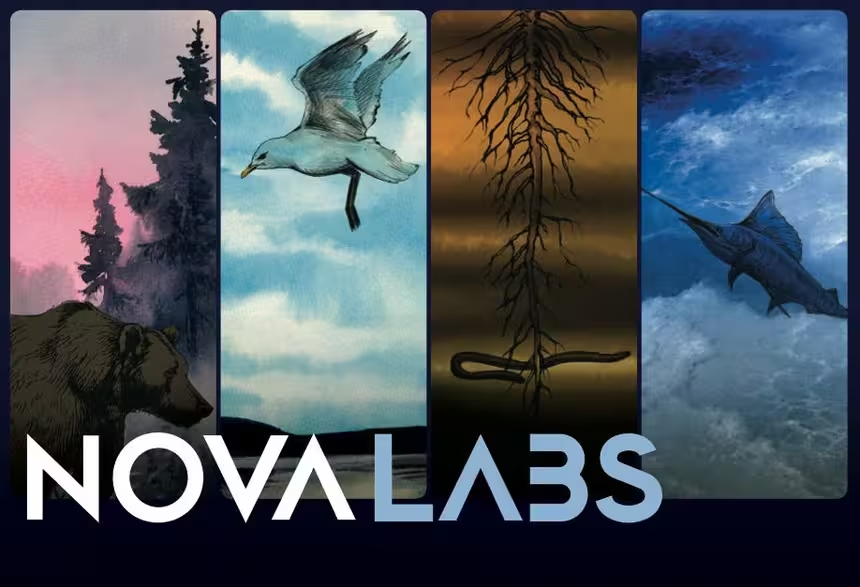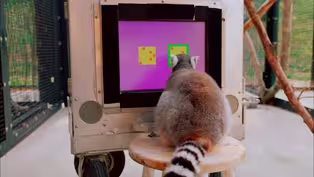
Do Plants Know Math?
Clip: Season 42 Episode 7 | 2m 24sVideo has Closed Captions
Evolution seems to favor these numbers.
From the petals of flowers to spirals of pinecones, the Fibonacci sequence mysteriously shows up in nature.
Problems playing video? | Closed Captioning Feedback
Problems playing video? | Closed Captioning Feedback
National Corporate funding for NOVA is provided by Carlisle Companies and Viking Cruises. Major funding for NOVA is provided by the NOVA Science Trust, the Corporation for Public Broadcasting, and PBS viewers.

Do Plants Know Math?
Clip: Season 42 Episode 7 | 2m 24sVideo has Closed Captions
From the petals of flowers to spirals of pinecones, the Fibonacci sequence mysteriously shows up in nature.
Problems playing video? | Closed Captioning Feedback
How to Watch NOVA
NOVA is available to stream on pbs.org and the free PBS App, available on iPhone, Apple TV, Android TV, Android smartphones, Amazon Fire TV, Amazon Fire Tablet, Roku, Samsung Smart TV, and Vizio.
Buy Now

NOVA Labs
NOVA Labs is a free digital platform that engages teens and lifelong learners in games and interactives that foster authentic scientific exploration. Participants take part in real-world investigations by visualizing, analyzing, and playing with the same data that scientists use.Providing Support for PBS.org
Learn Moreabout PBS online sponsorship- [Narrator] These may sound like random numbers, but they're all part of what is known as the Fibonacci sequence, a series of numbers developed by a 13th century mathematician.
- You start with the numbers one and one, and from that point on, you keep adding up the last two numbers.
So one plus one is two, now one plus two is three.
Two plus three is five.
Three plus five is eight, and you keep going like this, five plus eight.
- [Narrator] Today, hundreds of years later, this seemingly arbitrary progression of numbers fascinates many who see in it clues to everything from human beauty to the stock market.
While most of those claims remain unproven, it is curious how evolution seems to favor these numbers.
- And as it turns out, I mean the sequence appears quite frequently in nature.
- [Narrator] Fibonacci numbers show up in petal counts, especially of daisies, but that's just a start.
- Statistically, the Fibonacci numbers do appear a lot in botany.
For instance, if you look at the bottom of a pine cone, you will see often spirals in their scales.
You end up counting those spirals.
You'll usually find a Fibonacci number, and then you will count the spirals going in the other direction, and you will find an adjacent Fibonacci number.
- [Narrator] The same is true of the seeds on a sunflower head.
Two sets of spirals, and if you count the spirals in each direction, both are Fibonacci numbers.
While there are some theories explaining the Fibonacci botany connection, it still raises some intriguing questions.
- So do plants know math?
The short answer to that is no.
They don't need to know math.
In a very simple, geometric way they set up a little machine that creates the Fibonacci sequence in many cases.
Video has Closed Captions
Clip: S42 Ep7 | 2m 1s | Researchers designed a test to see how well lemurs can compare quantities. (2m 1s)
Video has Closed Captions
Clip: S42 Ep7 | 2m 1s | Pythagoras saw a connection between math, music, and nature. (2m 1s)
Providing Support for PBS.org
Learn Moreabout PBS online sponsorship
- Science and Nature

Capturing the splendor of the natural world, from the African plains to the Antarctic ice.













Support for PBS provided by:
National Corporate funding for NOVA is provided by Carlisle Companies and Viking Cruises. Major funding for NOVA is provided by the NOVA Science Trust, the Corporation for Public Broadcasting, and PBS viewers.




